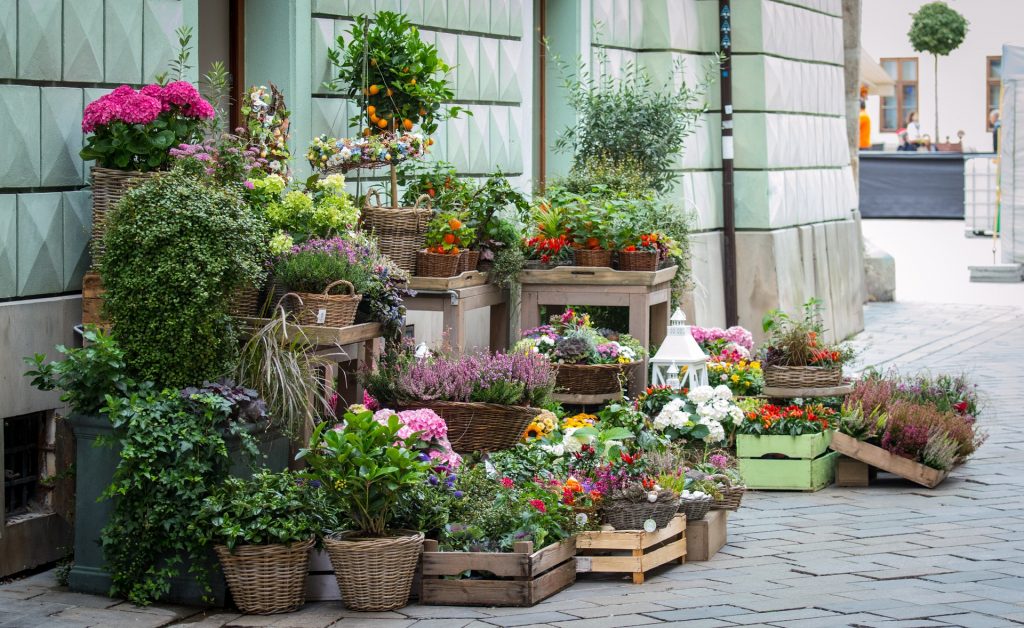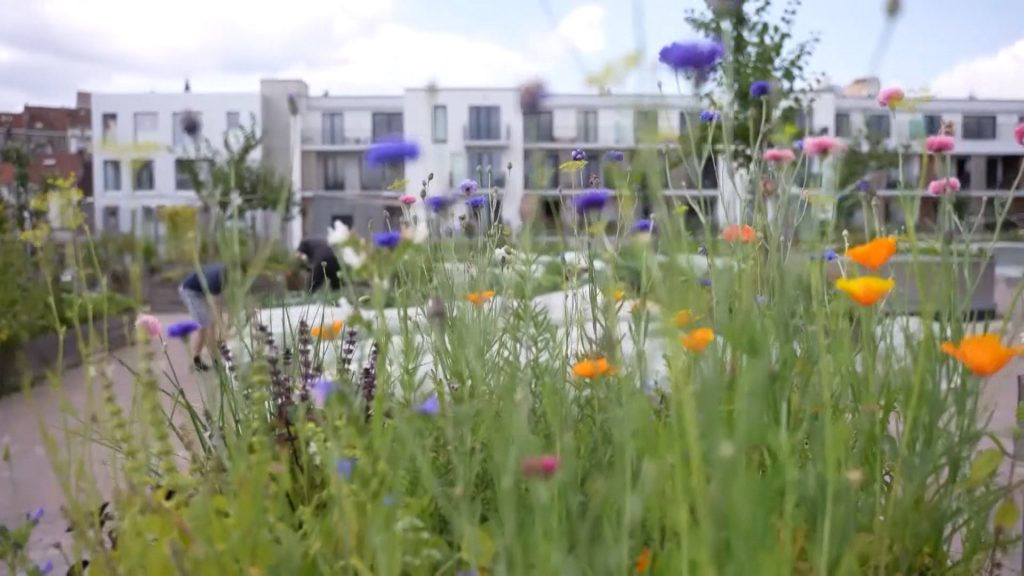Guerrilla gardening is a phenomenon that has not bypassed Zagreb. This can be seen by the (un)intentional actions of urban gardening on public areas that citizens do on their own, wanting to point out different possibilities for food production, ecological sustainability and city planning.
The name “guerrilla” comes from military rhetoric and refers to a certain conflict with the mainstream, said Hina sociologist from the Institute of Social Sciences Ivo Pilar Sara Ursić.
Specifically, it refers to “occupying”, in the sense of planting or arranging, areas that are not owned by the gardener, says sociologist from the Faculty of Philosophy Jana Vukić.
Its goals often include the erasure of hard boundaries within a green urban space that is limited to traditional urban elements such as lawns or parks.
Guerrilla gardening can be a direct consequence of the population’s existential circumstances, where growing food is a necessity, says Ursić.
On the other hand, as a certain political action, its goal is to point out the wide range of possibilities provided by public spaces in the context of food production, ecological sustainability and contemporary landscape urbanism.
It is a multi-layered concept that includes a wide range of practices, which are quite common in the world today – from the USA, through Europe, to Asia and Australia.
Aspects of guerrilla gardening
Ursić emphasizes four important aspects that distinguish guerrilla gardening from other types of gardening.
First, its concept is closely related to urban space. Not exclusively, but the city is a regular place for guerrilla gardening.
Then, it happens in the sphere of public space that is accessible to everyone and that is often neglected or unused.
Also, guerrilla gardening is a political act whose purpose is to return space to citizens, especially when it comes to spaces that are formally public, but have actually been privatized by various activities, the sociologist points out.
After all, guerilla gardening is most often temporary and belongs to the so-called “temporary” or “DIY” (do it yourself) urbanism.
Other types of gardeners often start out as guerilla operations. Uršić adds that this is how so-called “wild”, or urban gardens are created, which the community uses for growing fruits and vegetables, which is the most common concept of urban gardening in our country.
 Photo by Kenny Eliason on Unsplash
Photo by Kenny Eliason on Unsplash
Vrbana flower garden
In 2011, the Zagreb Association “Vestigium” decided to plant a similar urban garden in front of its premises in Vrbane.
Calling the community to action, together with the citizens, they planted flowers, tomatoes and potatoes in four concrete flower beds measuring about four squares that were gaping empty, said Hina Irena Borovina from Vestigium.
In the seventh month, they picked the fruits, and the kids were delighted, adds Borovina. In addition, they planted annual or perennial bushy plants, eg lavender, rosemary, immortelle.
Thus, the square that the majority of the community had not even noticed until then turned into a place where people began to gather and take care of what was planted together.
People from Zrinjevac even came to water those gardens, “and we got permission from them that it’s ok as long as we don’t destroy it,” says Borovina.
“The key was when we realized that we don’t have to wait for someone else to come and plant flowers, but that we can do it ourselves.”
“It would be useful for every neighborhood to have an area where people gather and garden together. It’s a wonderful practice that invites people to go outside, to be in the fresh air, to grow food, to be connected to each other,” Borovina points out.
Invasive species and allergens
The head of the Botanical Garden in Zagreb, Vanja Stamenković, evaluates only positive actions aimed at making something useful, beautifying or cleaning, because in most cities there is still a lack of greenery, and there are too many neglected parts.
However, he points out that when planting in the natural environment, damage can be done if plants that do not belong in that area are used, especially when it comes to invasive species and allergens.
“Knowledge, conscience and care are needed to avoid this,” said Hini, a biologist from the PMF.
Different plants do different problems in different places. Some will be invasive only in an area where there is a certain type of soil, or enough light, or enough water.
At the EU level, there is a “black list” of invasive plant species that should be avoided and some even removed.
“These are plants that are terribly competitive and occupy huge areas and crowd out native plants,” warns Stamenković.
As an example, he cited acacia, which now does much more harm than good, and was introduced about 300 years ago as a beautiful and honey-bearing plant.
 Pixabay / Illustration
Pixabay / Illustration
Psychological effect
Professor of horticulture and landscape architecture from the Faculty of Agriculture, Vesna Židovec understands people’s need and desire for planting.
“Gardening has a significant psychological effect on people and can help them feel better, to see the results of their work. It is likely that the users of the space themselves are dissatisfied with the maintenance of public green areas, so they want to make their contribution and arrange the space,” said Hini.
To all who decide to plant on their own, he recommends following the rules of the profession and using indigenous plant species.
“There are a lot of species that are both poisonous and allergenic, and with today’s public health problems, it is necessary to avoid species that can harm the users of the space,” adds Židovec.
As an example of an invasive species, she mentioned the pajasen. He says that people like it because it grows quickly and has a beautiful tree, but it has an extremely negative effect on the environment because it suffocates everything around it and is a huge threat to all other native species.
“If our autochthonous species disappear, their fruits also disappear, and the habitats for different animals disappear, and there is a major imbalance,” she emphasized.
He sees the solution in establishing communication between utility companies, the profession and the local community that has the desire to do something.
“If communication was established, we would be able to solve a lot of problems to everyone’s satisfaction, and the community would be able to connect with expert guidance and get involved in the care of greenery.”
Unwanted activity
Despite the noble goals, guerrilla gardening is a certain protest, sociologist Ursić adds, and because of this, it can represent an undesirable practice like any “disobedience”.
Although it is often tolerated, especially if it is about spaces that are not “attractive”, according to the sociologist.
He cites research on the perceptions of different actors about guerrilla gardening, from which it is evident that not only political/management actors have a problem with guerrilla gardening, but also the population, the local community.
Members of the Biljkoborci association knew how to plant flowers in unusual places around Zagreb, for example in facades, because they were interested in people’s reactions. For Hina, they said that the reactions of the citizens were very good.
Considering how cities look today, Biljkoborci say that they are not surprised that people try to beautify the environment themselves.
The owner of the pastry shop, Martina Živković, and her neighbor met with different reactions from the citizens. They reported them to the municipal police, because they planted a small garden in front of their building in Preradovićeva after the 2020 earthquake.
“We just wanted to ennoble, beautify the space, in the middle of the corona, after the earthquake. It was no rebellion. We wanted to make something beautiful for the citizens out of something sad and ugly,” said Hini Živković.
He believes that there should be some flexibility in this matter, and wonders “if the City doesn’t do anything, why can’t anyone else”.
The media reported that their garden was devastated already two months after they planted it.
 N1, Illustration
N1, Illustration
“This is not provided for in the regulations”
Public green areas owned by the City of Zagreb are arranged and maintained by Zagreb Holding, Zrinjevac branch.
In accordance with the provisions of the decision on communal order, it is not allowed to take unauthorized measures, which includes planting plants and the like, on public green areas, replied Hina City of Zagreb.
He confirmed that there are locations where citizens have planted plants without authorization, and over time, at the request of other citizens, most of such areas are returned to their original state due to neglect.
“They often plant plants without authorization, so they do not maintain those same plants, which is why the environment in which they were planted soon becomes neglected”, claim the city fathers.
Citizens, they add, often plant inappropriate species that later pose a problem for the surrounding area.
To the question “why is it better for a space that has no other purpose to be gaping empty than for the citizens to arrange it themselves by gardening” the City replied that “empty spaces, i.e. undeveloped construction land, green areas with no purpose, which are owned by the City, can to be allocated to citizens for planting plants, but under certain conditions”.
How many fines for guerrilla gardening have been issued so far and what type of activity is most often reported are questions that the City has not answered.
Green parties and guerrilla gardening
“I believe that the green parties could be more receptive to such practices,” says Ursić. As an example, he cites the Netherlands, where they encourage guerrilla gardening, and the rest of the political scene is not against it either.
For the green parties, as organized players who play by the rules, guerrilla gardening is often a “marginal” practice, he adds.
Ursić is not sure whether any political option would welcome guerrilla gardening in Zrinjevac or around HNK.
However, he believes that within city blocks that are derelict and deplorable, political actors would likely have significantly different approaches to guerrilla gardening.
“I’m not a guerrilla”
Since 1986, and the disaster in Chernobyl, Vladimir Dimić has been planting trees around Zagreb on his own. He planted over 100 of them, but, he says, he did so with the advice of experts.
At the same time, he does not like that it is called “guerrilla” activity.
“I do something good, smart, humane, beautiful, and then it’s like a guerrilla. Never mind. That is, beyond the existing ways – I don’t ask for permissions for what I do, but I don’t think I need them either. If I had to struggle with permits, I would never do anything,” said Hini Dimić.
In his spare time, he replaces trees that were planted on landscaped green areas, but due to carelessness, they have dried up, broken, etc.
He notes that it is not enough just to plant a tree. It needs to be cared for and watered in order for it to become independent. He is worried that watering is not organized during heat waves and claims that at least 15 percent of the trees in the city dry up due to lack of watering.
He doesn’t even understand what urban planners are doing, because it seems to him that there are fewer and fewer green areas and that concrete is “eating” everything.
He says that he never had a problem with either the past or the current city government.
“I plant 20 trees a year, while I manage to pray for two replacements of a dried tree,” says Dimić, hoping that the green government will change the situation.
Track N1 via Android apps | iPhone/iPad and social networks Twitter | Facebook | Instagram.

